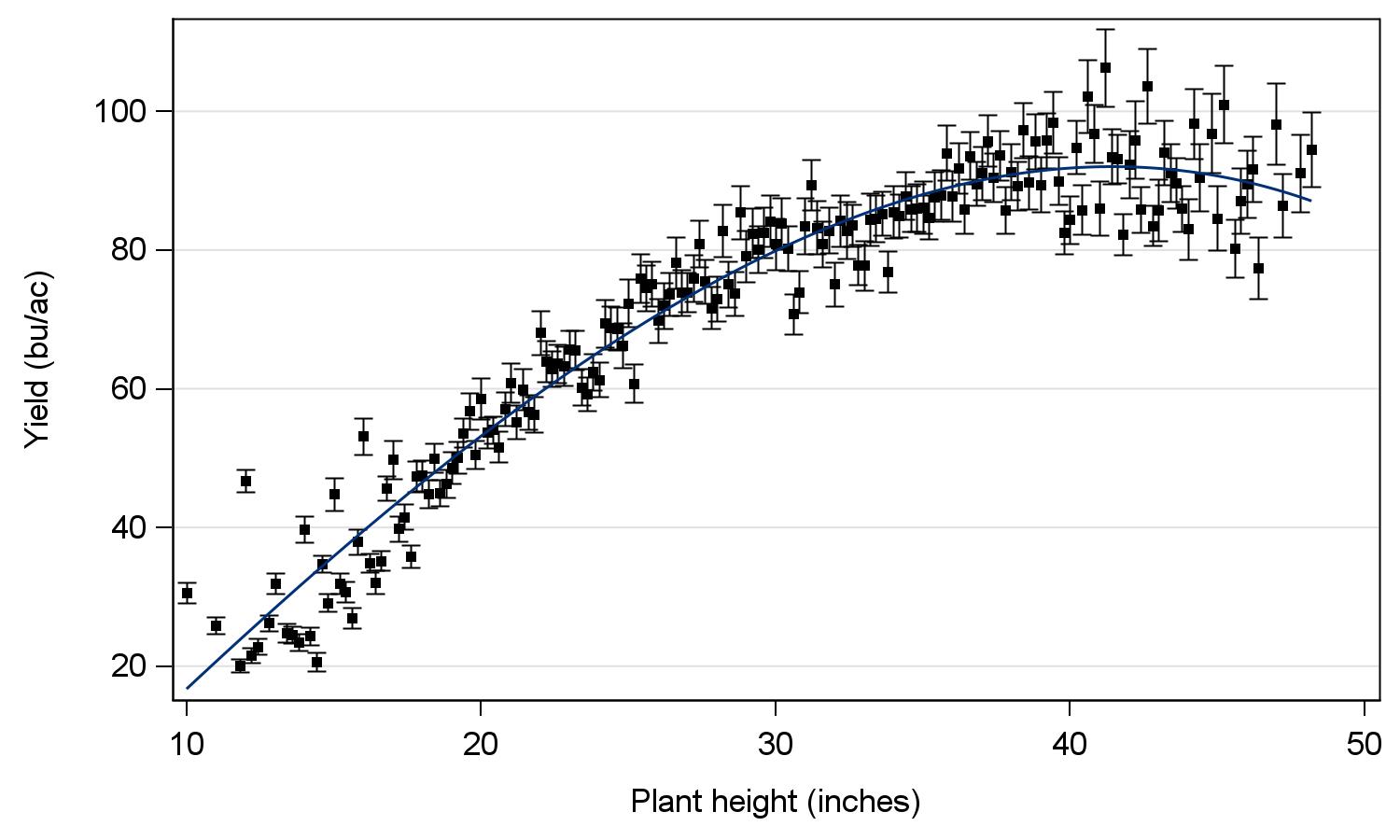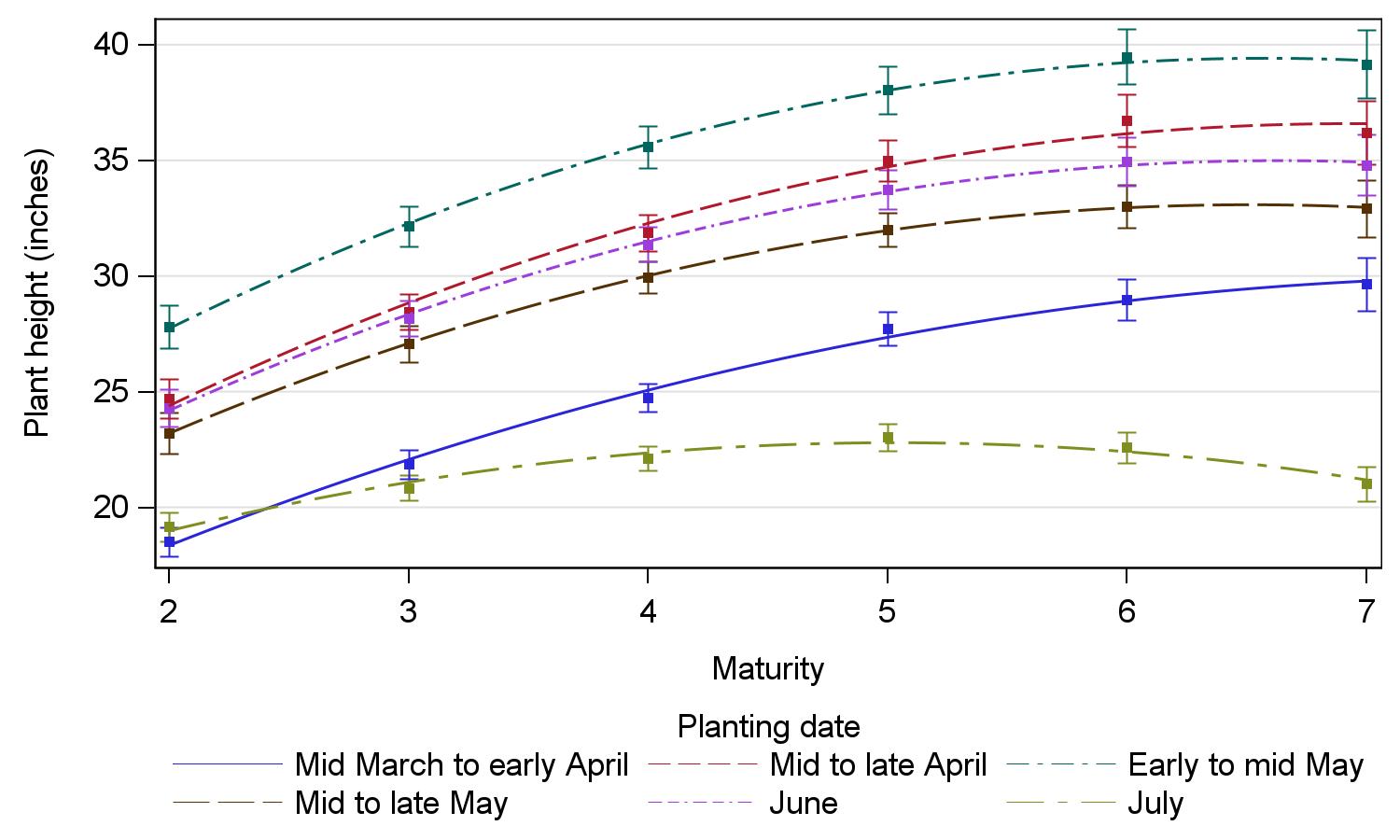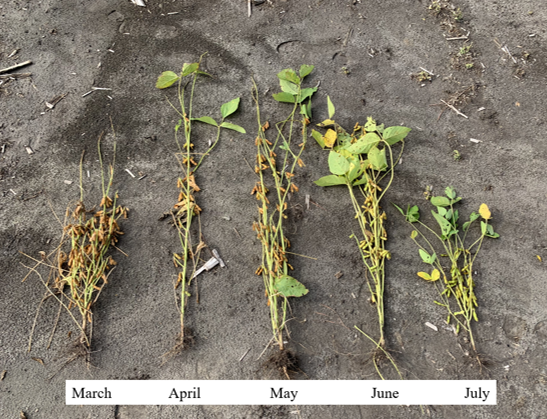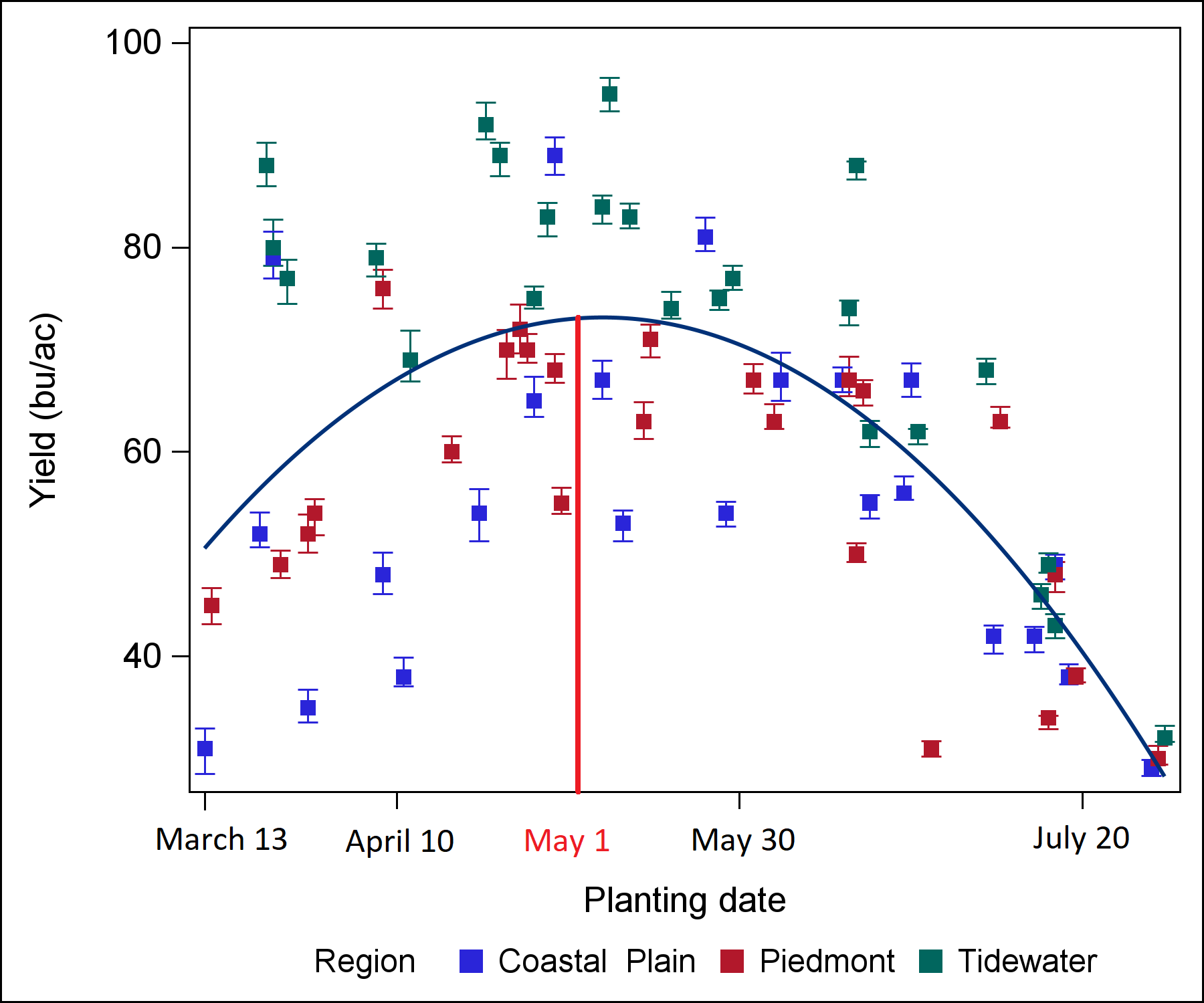How Does Soybean Planting Date Impact Plant Height and Soybean Yield?
go.ncsu.edu/readext?981182
en Español / em Português
El inglés es el idioma de control de esta página. En la medida en que haya algún conflicto entre la traducción al inglés y la traducción, el inglés prevalece.
Al hacer clic en el enlace de traducción se activa un servicio de traducción gratuito para convertir la página al español. Al igual que con cualquier traducción por Internet, la conversión no es sensible al contexto y puede que no traduzca el texto en su significado original. NC State Extension no garantiza la exactitud del texto traducido. Por favor, tenga en cuenta que algunas aplicaciones y/o servicios pueden no funcionar como se espera cuando se traducen.
Português
Inglês é o idioma de controle desta página. Na medida que haja algum conflito entre o texto original em Inglês e a tradução, o Inglês prevalece.
Ao clicar no link de tradução, um serviço gratuito de tradução será ativado para converter a página para o Português. Como em qualquer tradução pela internet, a conversão não é sensivel ao contexto e pode não ocorrer a tradução para o significado orginal. O serviço de Extensão da Carolina do Norte (NC State Extension) não garante a exatidão do texto traduzido. Por favor, observe que algumas funções ou serviços podem não funcionar como esperado após a tradução.
English
English is the controlling language of this page. To the extent there is any conflict between the English text and the translation, English controls.
Clicking on the translation link activates a free translation service to convert the page to Spanish. As with any Internet translation, the conversion is not context-sensitive and may not translate the text to its original meaning. NC State Extension does not guarantee the accuracy of the translated text. Please note that some applications and/or services may not function as expected when translated.
Collapse ▲Obtaining a certain plant height in soybean production is important to maximize yield potential and Dr. Dunphy would famously emphasize that soybean middles needed to be ‘lapped’ to be at maximum yield potential (Figure 5.1).
We have recently investigated the relationship between plant height and soybean yield in North Carolina and have found that there is a positive correlation between plant height and soybean yield up to about 36 inches (3 ft), after which the relationship between soybean plant height and soybean yield flattens out and even trends toward declining around 45 inches (3.75 ft) (Figure 1).

Figure 1. Soybean plant height impact on soybean yield combined across 5 years of data collected from 20 sites across North Carolina, planting dates from March to July, and maturity groups 2-8
We have also investigated how the various planting dates used in North Carolina soybean production impact plant height and ultimately soybean yield. We have done this in diverse environments across the state and have seen a surprising trend in how planting date interacts with soybean plant height and ultimately yield. In these trials we have had soybean planting dates from March through July, capturing the wide range in soybean planting dates used across North Carolina, and also have looked at a wide range in soybean maturity groups (2-8).
We have seen a very consistent quadratic response of soybean planting date and soybean plant height and this has been largely regardless of the soybean maturity group used (Figure 2). You can see in this figure that the tallest soybeans have been planted from mid-April to May-May (teal and red lines, Figure 2). The shortest soybeans were planted in July (light green line, Figure 2) followed by the next shortest soybeans planted in mid-March to early April (blue line, Figure 2).

Figure 2. The impact of planting date and maturity group on soybean plant height combined over 20 North Carolina locations
You can look at this another way in the picture below from Sampson County in a MG5 variety plant from March through July (Figure 3).

Figure 3. Soybean planting date impact on soybean height in a MG5 variety in Sampson County, North Carolina
This trend was not expected going into this research but now that we have seen this over 5 years in North Carolina we are confident that our soybeans planted before mid-April in North Carolina often have shorter plant heights than more moderate full season planting dates (late April through mid-June). This is a realized risk of planting before mid-April across the state, particularly in the Coastal Plain and Piedmont Regions, where you are not getting to the plant heights needed to maximize yield. Why are we seeing shorter plant heights with planting dates before mid-April when we would generally except that the earliest planted beans would be the tallest? Based on our research, we have consistently seen that the early season temperatures have not driven vegetative growth in soybeans planted before mid-April like temperatures drive vegetative growth in full-season soybeans planted in May and early June. This impact of early planting (before mid-April) on plant height or vegetative growth can have negative yield implications along with other early season planting risks such as cool soils synergizing herbicide injury or early season pathogens, seed quality declines on the backend of the season when a MG2-5 variety is planted early, and early season insect pressure in soybeans planted before mid-April (Figure 4). While we have seen some yield risk in much of the state when planting before mid-April, we have still found that those early planting dates pose no more yield risk than some of the later planting dates (past mid-June) used in the state.

Figure 4. Soybean yield response to planting date combined over maturity group and seeding rate at 15 North Carolina environments from 2019-2022. Each dot represents an individual environment by planting date combination
In summary, the relationship between planting date and the plant height needed to drive soybean yield is more complicated than previously understood in our region and farmers in our region cannot assume the earliest planted beans will be the tallest and subsequently the highest yielding.


